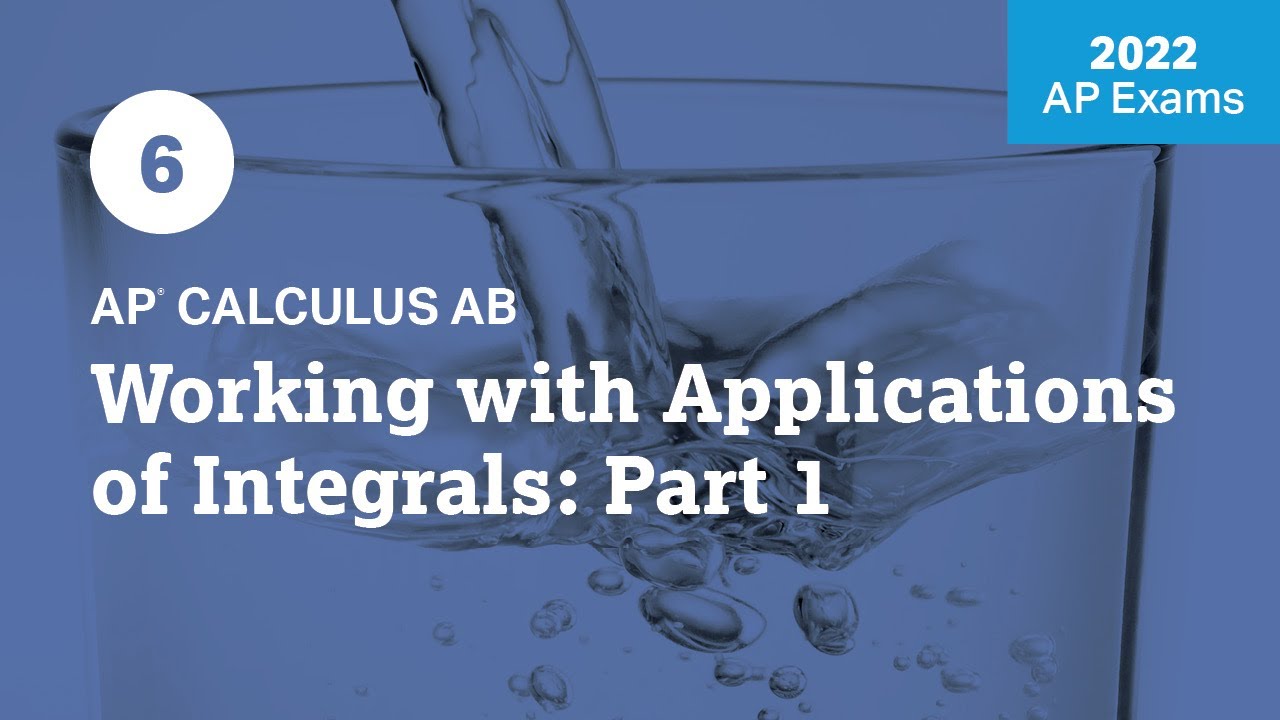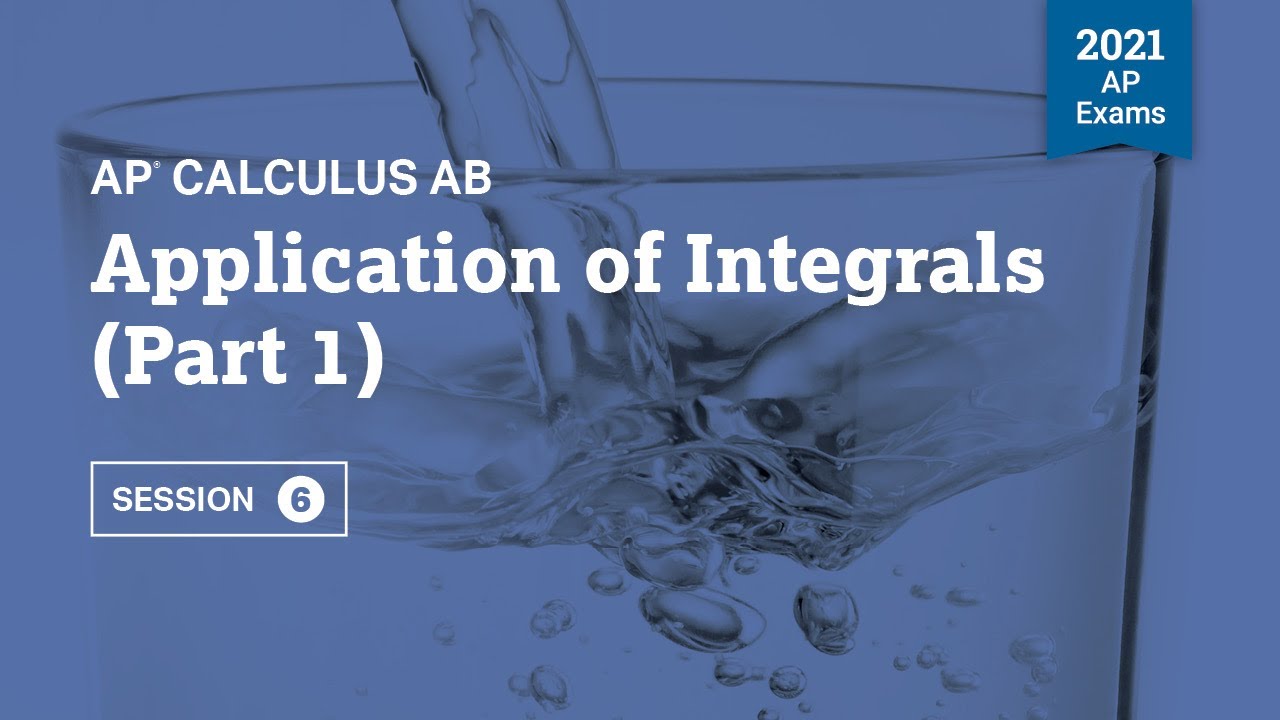AP Calculus Practice Exam Part 5 (MC #84-90)
TLDRThis script from an AP Calculus video series covers a range of calculus problems, focusing on concepts like the intermediate and mean value theorems, derivatives, and the application of these in determining local maxima and the distance traveled by a particle. The instructor uses humor and personal anecdotes to engage students, while also demonstrating the use of graphing calculators to solve complex problems. The session includes a mix of theoretical explanations and practical examples, aiming to clarify and reinforce students' understanding of calculus.
Takeaways
- 📚 The video is part of an AP Calculus series, specifically covering problems 84 to 90.
- 💼 The speaker humorously addresses the assumption that people check their emails and calendars, indicating the importance of communication for scheduling.
- 👨🏫 The instructor uses a conversational and relatable tone, sharing anecdotes to connect with the students and lighten the mood.
- 📈 The video covers the application of the Intermediate Value Theorem, emphasizing the need for a function to be continuous for the theorem to apply.
- 📚 The Mean Value Theorem is discussed, with clarification that the function must be both continuous and differentiable for its use.
- 📉 The process of finding local maxima and minima is demonstrated using technology, such as graphing calculators, to visualize the first derivative.
- 🔍 The video shows step-by-step instructions on how to use a graphing calculator to find zeros of a function, which represent turning points.
- 📝 The importance of note-taking during lectures is highlighted, with a humorous story about a student unable to write due to her nails.
- 🔢 The script includes a detailed walkthrough of solving calculus problems, including finding derivatives and integrals, and applying them to real-world scenarios like particle motion.
- ⏱ The video discusses the concept of instantaneous and average rate of change, showing how to calculate both and compare them.
- 📉 The use of the second derivative to determine concavity and implications on the original function's behavior is explained.
Q & A
What is the main topic of the video?
-The main topic of the video is AP Calculus, specifically covering problems 84 to 90, with a focus on understanding concepts such as the intermediate value theorem, derivatives, and the use of technology for graphing and solving calculus problems.
What is the Intermediate Value Theorem mentioned in the script?
-The Intermediate Value Theorem states that if a continuous function changes sign over an interval, then it must have a root within that interval. In the script, it is used to determine if there is a value 'c' that would make the function equal to four based on the given table of values.
How does the script discuss the Mean Value Theorem?
-The script mentions that the Mean Value Theorem can be applied to a function if it is continuous and differentiable. However, since the problem only states that the function is continuous, the Mean Value Theorem is not applicable in this case.
What is the significance of the student's nails in the script?
-The script humorously recounts a situation where a student had her nails done for prom and couldn't hold a pencil to take notes, highlighting a dilemma that arose due to her inability to write while the teacher suggested prioritizing the AP exam over the nails.
How does the script use technology to solve calculus problems?
-The script demonstrates the use of a graphing calculator to graph functions, find derivatives, locate local maxima, and calculate integrals. It provides step-by-step instructions on how to input functions into the calculator and interpret the results.
What is the concept of 'flipped classroom' mentioned in the script?
-The 'flipped classroom' concept refers to a teaching method where students watch lectures outside of class, usually via video, and do the 'homework' (assigned problems, readings, etc.) in class. The script mentions the teacher's intention to implement this method for calculus and statistics classes.
What is the importance of differentiability in the context of the script?
-Differentiability is important because it allows for the calculation of derivatives, which in turn can be used to analyze the behavior of a function, such as finding local maxima and minima, and determining the rate of change of the function.
How does the script explain the process of finding a local maximum using a graphing calculator?
-The script explains that to find a local maximum, one should graph the derivative of the function and look for where the graph goes from positive to negative. The script then guides the viewer through using the calculator's trace and intersect functions to find the exact x-coordinate of the local maximum.
What is the role of the senior class president in the script?
-The senior class president is mentioned in the context of communicating with school administration about the AP Calculus test date, implying that they have a leadership role and are responsible for ensuring that information is relayed to the student body.
How does the script handle the concept of displacement in the context of a particle's motion?
-The script explains that displacement is the total distance traveled by a particle, taking into account both the direction and magnitude of the motion. It demonstrates how to calculate the total distance by integrating the velocity function with an absolute value to account for changes in direction.
Outlines
📅 AP Calculus Test Scheduling and Assumptions
The speaker discusses the importance of notifying school administrators about the AP Calculus test date, emphasizing the need to send an email and check the academic calendar. They humorously address assumptions about people checking emails and calendars, and suggest the senior class president should be the one to communicate this information. The speaker then transitions into discussing a calculus problem involving the intermediate value theorem and the mean value theorem, highlighting the continuous nature of the function in question.
📚 Using Technology to Solve Anti-Derivative Problems
The speaker provides a step-by-step guide on using a calculator to graph the derivative of a function to find local maxima and minima. They explain the process of clearing the calculator's memory, entering the function, and using the graphing capabilities to identify where the function changes from increasing to decreasing. The focus is on finding the exact x-coordinate of a local maximum using the calculator's intersect function.
🔍 Analyzing Derivatives to Determine Function Behavior
The speaker examines the behavior of a function based on its derivatives, explaining that a positive first derivative indicates an increasing function, while a negative one indicates a decreasing function. They use a graphing calculator to demonstrate how to find where the derivative changes sign, which corresponds to a local maximum or minimum. The explanation includes a personal anecdote about coaching and the importance of resetting calculators before exams.
📈 Calculating Total Distance Traveled by a Particle
The speaker discusses a problem involving the velocity of a particle moving along the x-axis. They explain how to graph the velocity function and determine the time at which the particle changes direction from moving left to right. The process involves using the calculator's second trace function to find the exact time of this change. The speaker then describes how to calculate the total distance traveled by the particle using the integral of the velocity function, emphasizing the need to consider the absolute value to account for both positive and negative displacements.
📝 Derivative and Average Rate of Change Comparison
The speaker compares the instantaneous rate of change, or derivative, with the average rate of change for a given function over an interval. They demonstrate how to calculate the average rate of change using the function values at the endpoints of the interval and then graph the derivative to find where it intersects with the average rate of change. The goal is to determine the number of points in the interval where the derivative equals the average rate of change.
📉 Determining the Number of Points with Equal Derivative and Average Rate of Change
Building on the previous explanation, the speaker continues to explore the relationship between the derivative and the average rate of change. They graph the derivative and observe its intersections with a horizontal line representing the average rate of change. By counting the number of intersections within a specified interval, they determine the number of points where the instantaneous and average rates of change are equal.
📌 Understanding the Implications of Derivatives on Function Behavior
The speaker explains the implications of a function's first and second derivatives. A positive first derivative indicates that the function is increasing, while a positive second derivative suggests that the function is concave up, meaning the rate of increase is itself increasing. The speaker uses given function values to sketch the function and predict its behavior between two points, emphasizing the importance of understanding the concepts of increasing and concave functions.
🔢 Applying the Inverse Function Theorem to Find a Tangent Line
The speaker tackles a problem involving the inverse function theorem to find the equation of a tangent line to the graph of an inverse function at a specific point. They explain the process of finding the slope of the tangent line using the derivative of the original function and the point through which the tangent line passes by switching the x and y values from the original function's table. The summary includes a step-by-step guide on applying the inverse function theorem and writing the equation of the tangent line in point-slope form.
Mindmap
Keywords
💡AP Calculus
💡Intermediate Value Theorem
💡Mean Value Theorem
💡Derivative
💡Anti-derivative
💡Continuous Function
💡Local Maximum
💡Flipped Classroom
💡Displacement
💡Instantaneous Rate of Change
💡Average Rate of Change
Highlights
Introduction to AP Calculus video series, part 5454, continuing the sequence of educational content.
Discussion about communicating exam schedules with school administration and the importance of checking emails and calendars.
Explanation of the Intermediate Value Theorem using a table of values to determine the existence of a root.
Clarification that without information on differentiability, Mean Value Theorem cannot be applied.
Demonstration of how to clear calculator memory for a fresh start in exam conditions.
Graphing the derivative of a function to find local maxima and the use of technology for calculation.
Application of the concept of anti-derivatives and their relation to original functions.
Use of the second trace feature on a calculator to find exact points of intersection for zeros of a function.
Strategy for differentiating between possible derivatives of a function based on rate of change and slope.
Analysis of a particle's velocity function and the determination of when it changes direction.
Explanation of how to calculate the total distance traveled by a particle using integrals and absolute values.
Finding the average rate of change and comparing it to the instantaneous rate for a given interval.
Graphing the derivative to find points of intersection with a horizontal line representing the average rate of change.
Understanding the implications of a first derivative being positive and its effect on the original function.
Interpretation of a second derivative being positive, indicating the function is concave up and increasing at an increasing rate.
Using the point-slope form to estimate a function's value at a given point based on its increasing and concave up nature.
Finding the equation of a tangent line to the graph of an inverse function using the derivative and a specific point.
Application of the inverse function theorem to determine the slope of a tangent line to an inverse function.
Completion of the video series with a summary of the key concepts covered and a light-hearted reference to the video's title, 'Number 90'.
Transcripts
Browse More Related Video

AP Calculus Practice Exam Part 2 (MC #11-20)

2022 Live Review 6 | AP Calculus AB | Working with Applications of Integrals: Part 1

AP Calculus AB 2012 Multiple Choice (calculator) - Questions 76 - 92

2022 Live Review 5 | AP Calculus AB | Focusing on the Big Theorems Including IVT, EVT, & MVT

2021 Live Review 6 | AP Calculus AB | Application of Integrals (Part 1)

It All Adds Up: Accumulation Problems
5.0 / 5 (0 votes)
Thanks for rating: